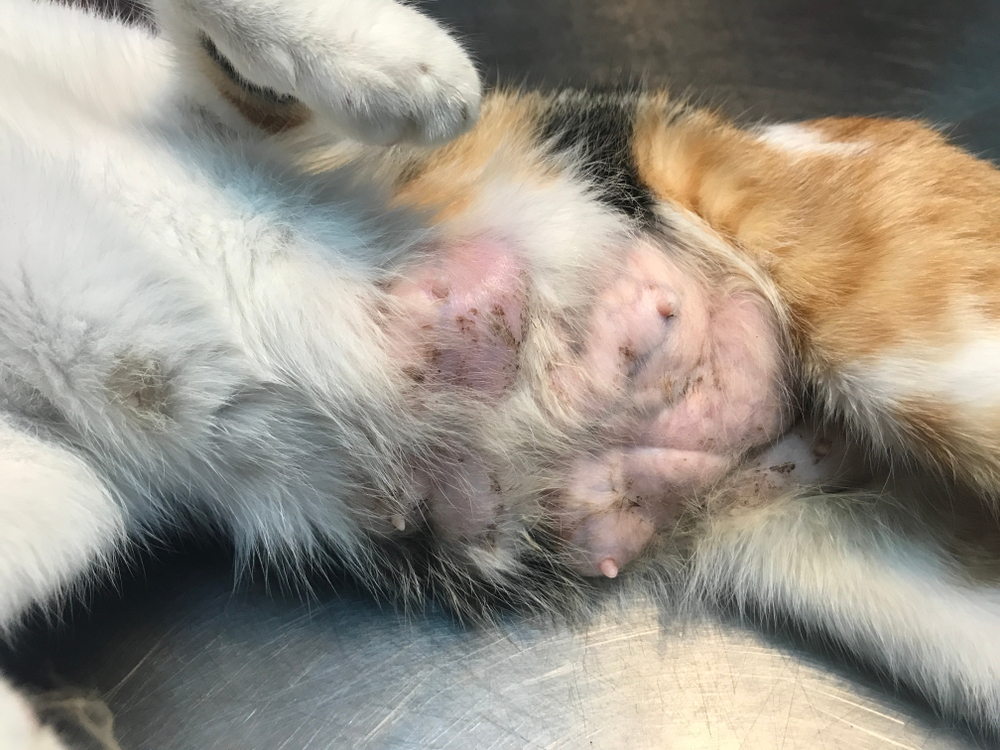A cancer diagnosis is never easy, but the dedicated team at Pearland Animal Cancer and Referral Center is devoted to ensuring your beloved companion has the best prognosis possible, with the most advanced diagnostic tools and treatment available. Although we see a wide range of cancers in pets, here are five that most commonly affect our furry family members.
#1: Osteosarcoma
Osteosarcoma is the most common bone cancer in dogs, with a higher prevalence in large- and giant-breed dogs such as Irish wolfhounds and Great Danes, but is less common in cats. Osteosarcoma typically occurs in the long bones, such as the ribs or the leg bones, although any bone in the body can be affected. This cancer generally spreads rapidly, metastasizing to the lungs, lymph nodes, and other bones, and has a poor prognosis, despite our gold-standard treatment. If a limb is affected, amputation is recommended, along with chemotherapy to treat metastases. Unfortunately, by the time a pet owner notices osteosarcoma signs, which include swelling, pain, and lameness in the affected limb, microscopic metastases have likely spread throughout the body, making this dual treatment protocol a necessity. Sadly, fewer than 10% of dogs who undergo this two-pronged treatment live longer than three years.
#2: Squamous cell carcinoma
Squamous cells, which line the outer layer of the skin and internal organs, can turn cancerous when damaged, such as through UV light exposure or tobacco smoke. Two forms of squamous cell carcinoma can affect pets—oral and skin (i.e., cutaneous). The oral form is locally aggressive, grows rapidly, and frequently invades the jawbone, leading to a poor prognosis. The cutaneous form rarely spreads beyond the original tumor site, but can travel to local lymph nodes and the lungs, and may reoccur in the same area after surgical removal.
Oral squamous cell carcinoma signs include:
- Bad breath
- Difficulty eating
- Excessive drooling
- Bleeding from the mouth
- Pain
- Loose teeth
- Ulcerated gums
Cutaneous squamous cell carcinoma typically affects white or light-colored pets who have the least amount of protection from harmful UV rays, and in cats, generally appears as reddened lesions on the ear tips, around the eyes, and on the temples. In dogs, squamous cell carcinoma tends to attack the nail beds. Both cancer forms are more common in cats than dogs, particularly in middle-aged to older cats.
#3: Lymphoma
Lymphoma is one of the most common cancers found in pets, and can take a variety of forms. This cancer originates in the lymphocytes, a type of white blood cell responsible for the body’s defenses, and can spread to attack the lymph nodes, organs, bone marrow, and any body part. Lymphoma is most common in middle-aged to older pets, but can sometimes affect young pets. Cats who have been diagnosed with feline leukemia or feline immunodeficiency virus have an increased risk of developing lymphoma, while canine breeds, such as golden retrievers, boxers, Saint Bernards, Airedale terriers, Scottish terriers, and basset hounds appear the most affected.
Lymphoma signs depend on the body area affected, and can include:
- Swollen lymph nodes
- Vomiting
- Diarrhea
- Weight loss
- Coughing
- Shortness of breath
- Loss of appetite
- Constipation
- Black, tarry stool
Some lymphoma forms respond well to treatment, and may go into remission, but many pets who continue to suffer from lymphoma can experience a good quality of life for some time while undergoing treatment.
#4: Mast cell tumor
Mast cell tumors arise from a type of blood cell associated with allergic responses, and generally form on the skin, although they can pop up in the bone marrow, spleen, liver, and intestinal tract. These tumors can range in severity from low-grade, less aggressive masses, to high-grade, metastatic tumors. Low-grade tumors that are surgically removed with wide margins have the best prognosis for complete recovery.
Mast cell tumors vary in appearance, and may be a raised lump under the skin, or become red, ulcerated, or swollen. They can remain stagnant for months, or may appear suddenly, and grow quickly. They may also fluctuate in size daily. Boxers, bulldogs, and Siamese cats are most at risk for mast cell tumor development.
#5: Mammary gland carcinoma

Mammary gland carcinomas are the most common tumors in unspayed female cats and dogs, and may go unnoticed for long periods. The lumps begin as a small nodule around the nipple or in the mammary chain, but can grow to large, painful, ulcerated tumors. In dogs, 50% of these tumors will be malignant, and 50% of malignant tumors will be fatal. Sadly, malignant mammary tumors in cats are 90% fatal. Spaying your pet before her first heat cycle greatly reduces her risk for mammary cancer development.
Pets are like people, and can fall victim to many cancer forms. If you notice unusual lumps, or changes in appetite, activity, or behavior, contact your family veterinarian for a thorough physical exam and diagnostic testing.
If your beloved pet does receive a cancer diagnosis, our Pearland Animal Cancer and Referral Center team is ready to help you through such a challenging time. A referral from your family veterinarian to a veterinary oncologist will grant your furry family member the best prognosis, and the most advanced treatment. Call us to discuss how we can help care for your cherished companion after their cancer diagnosis.


